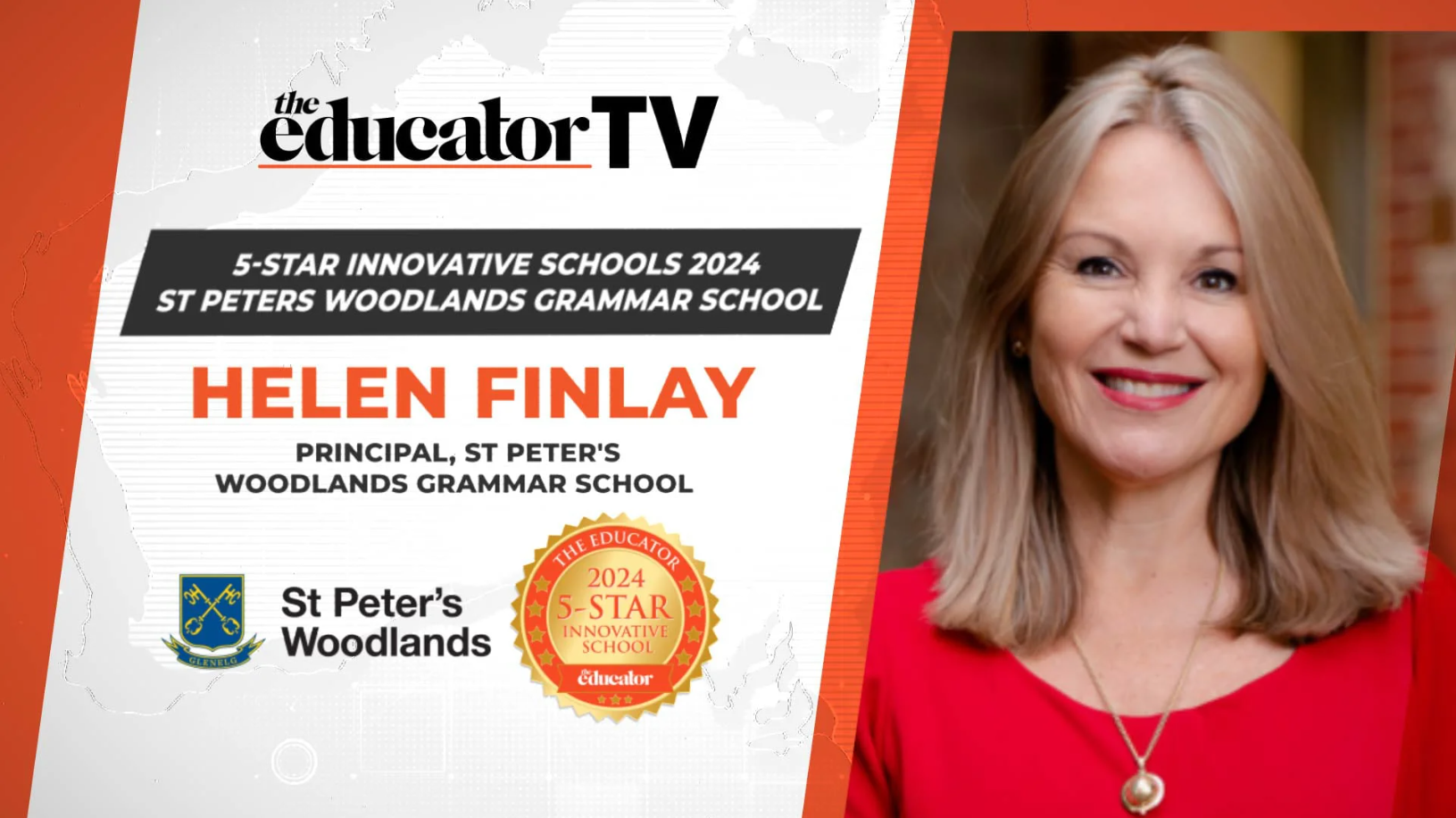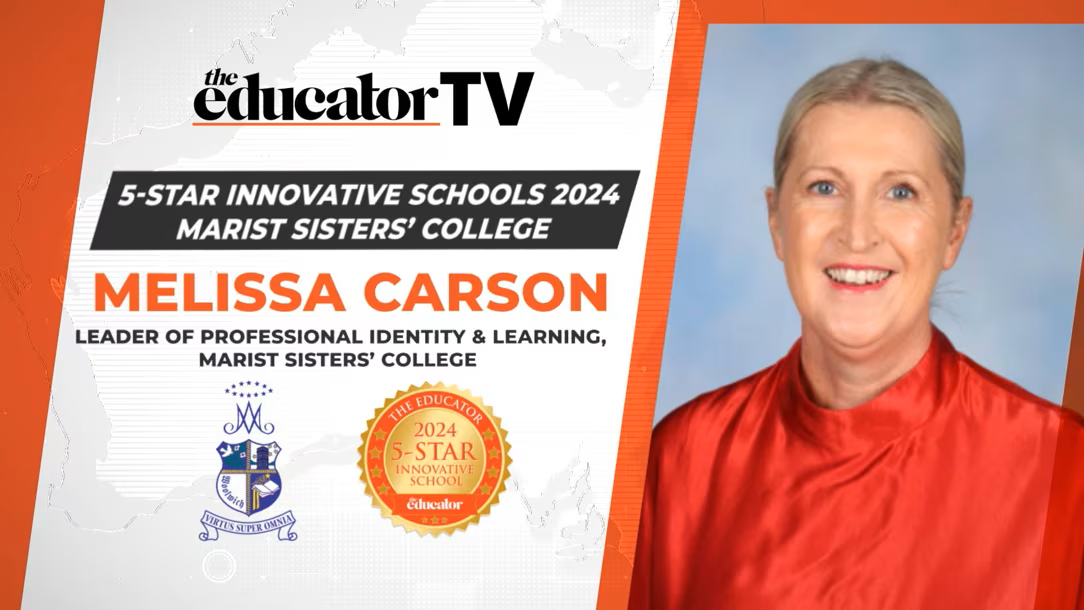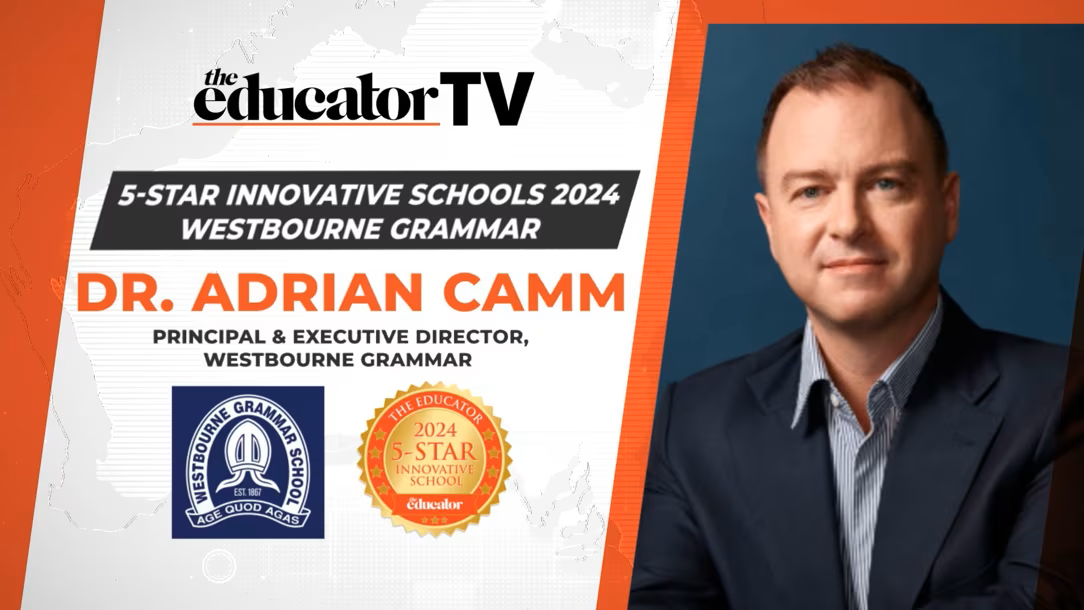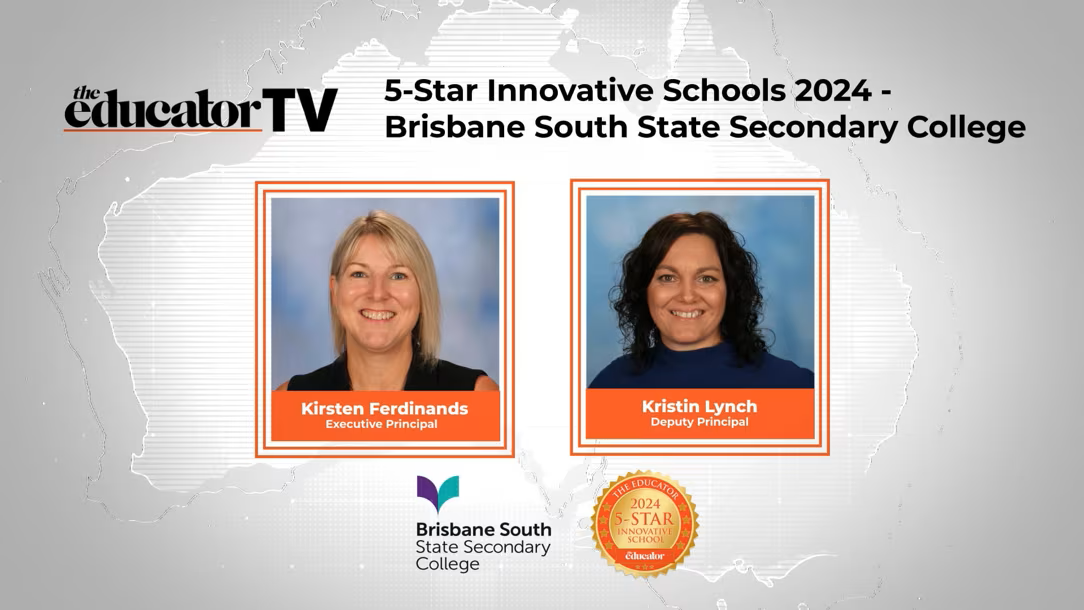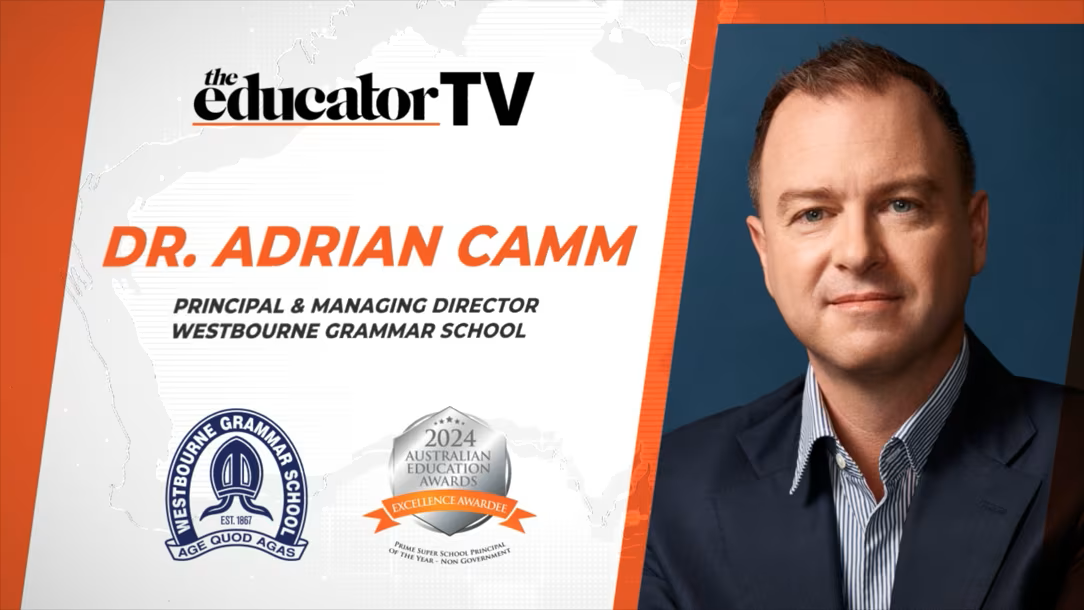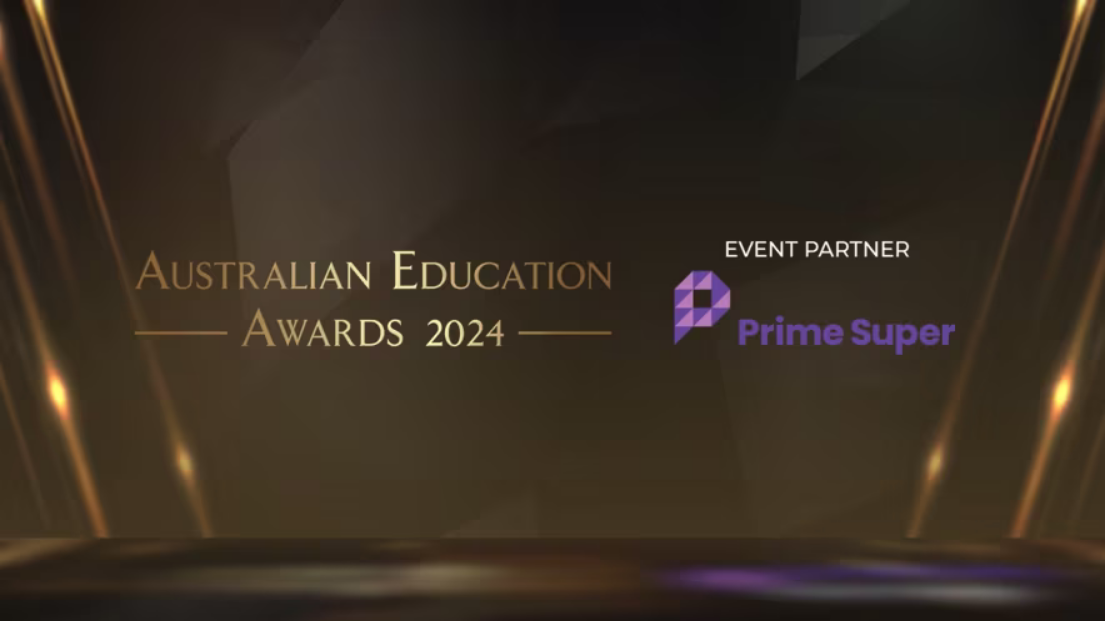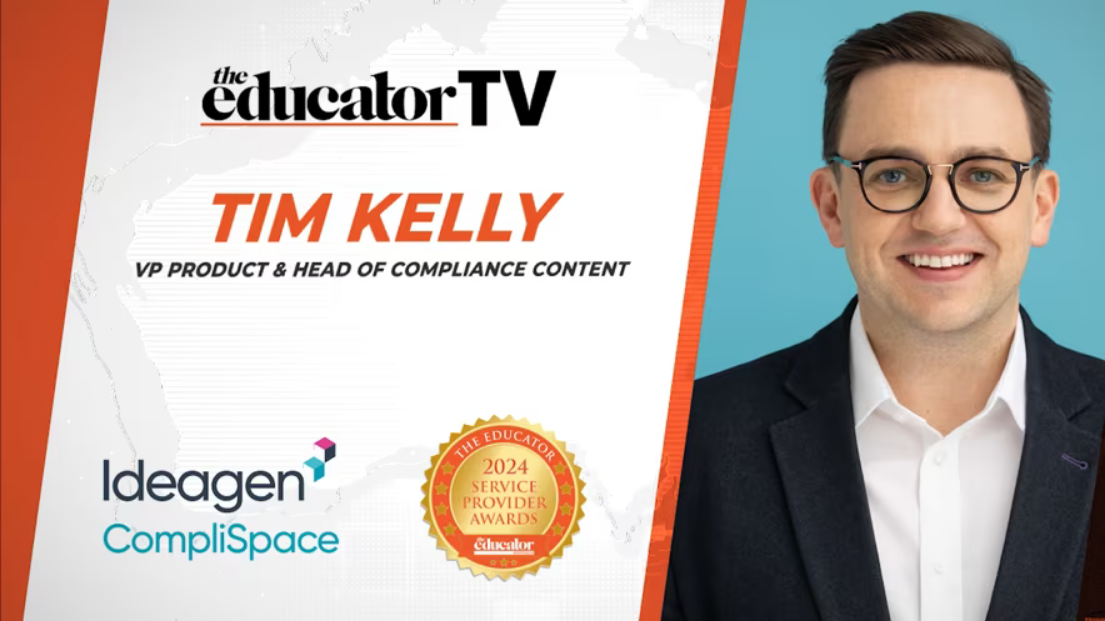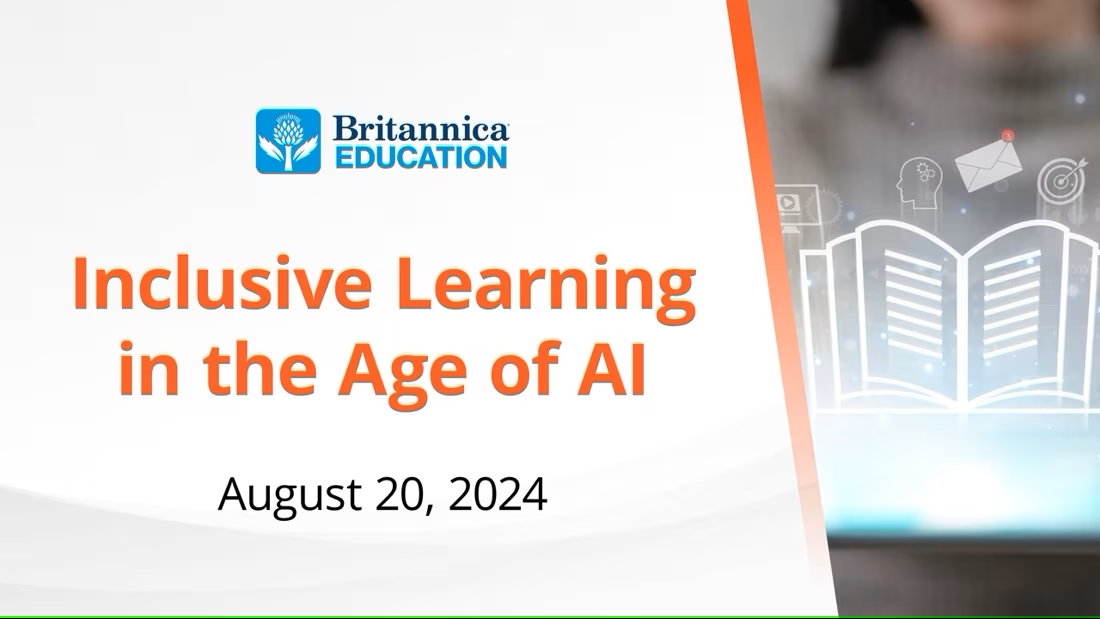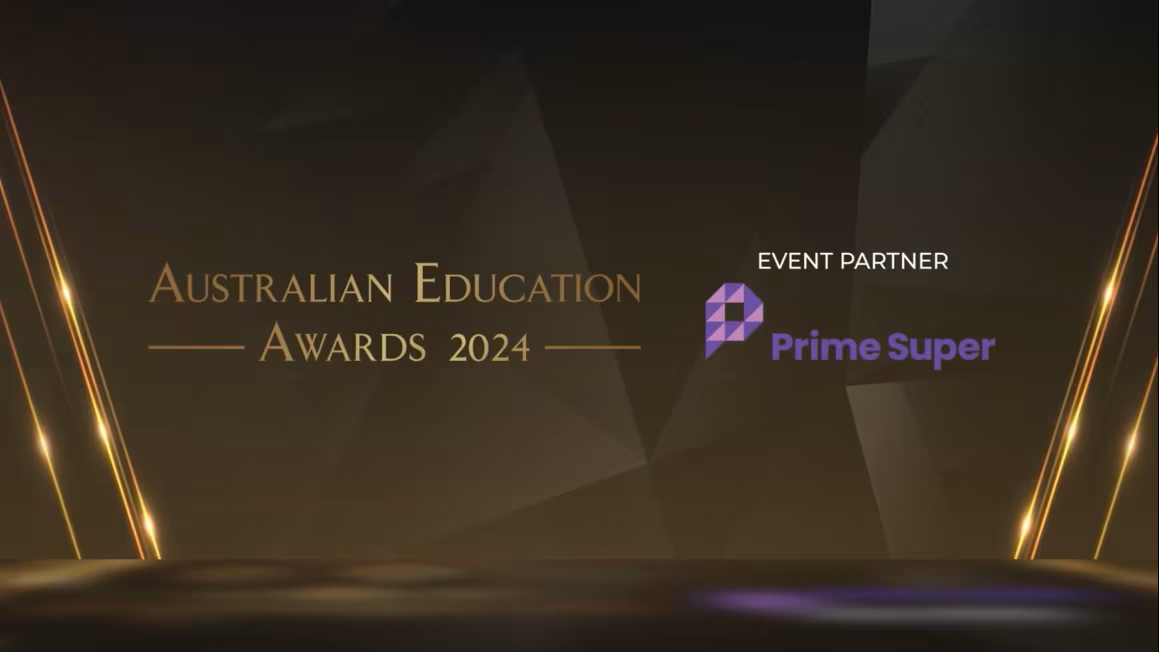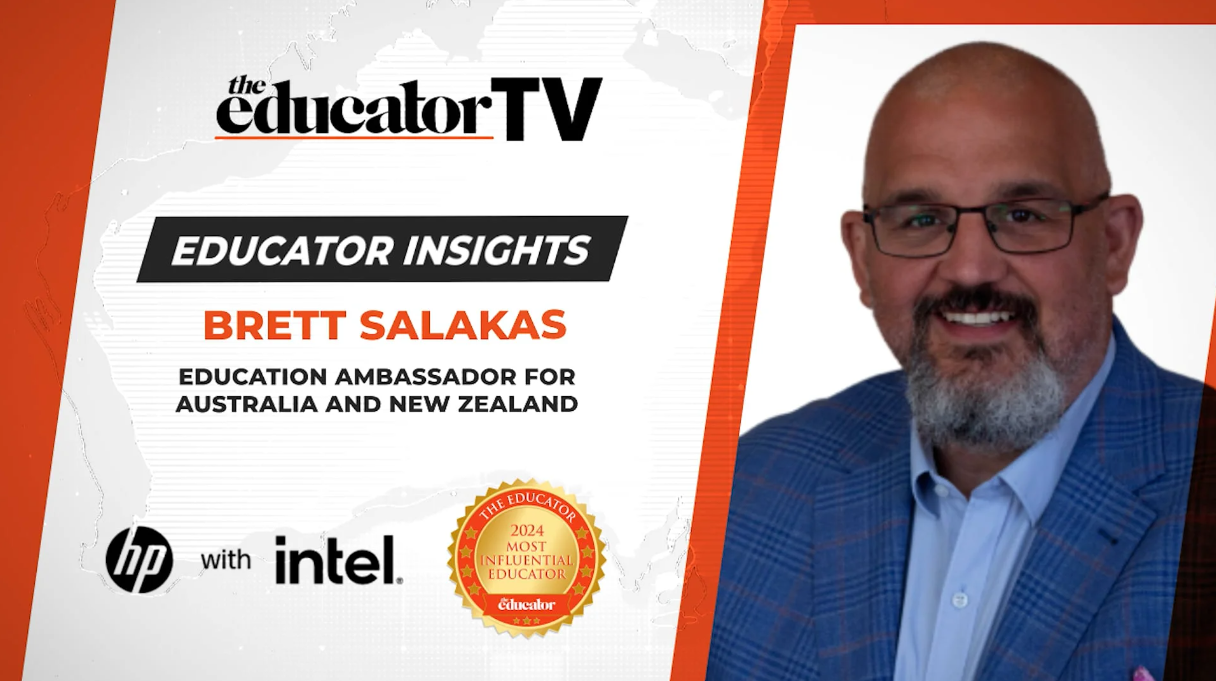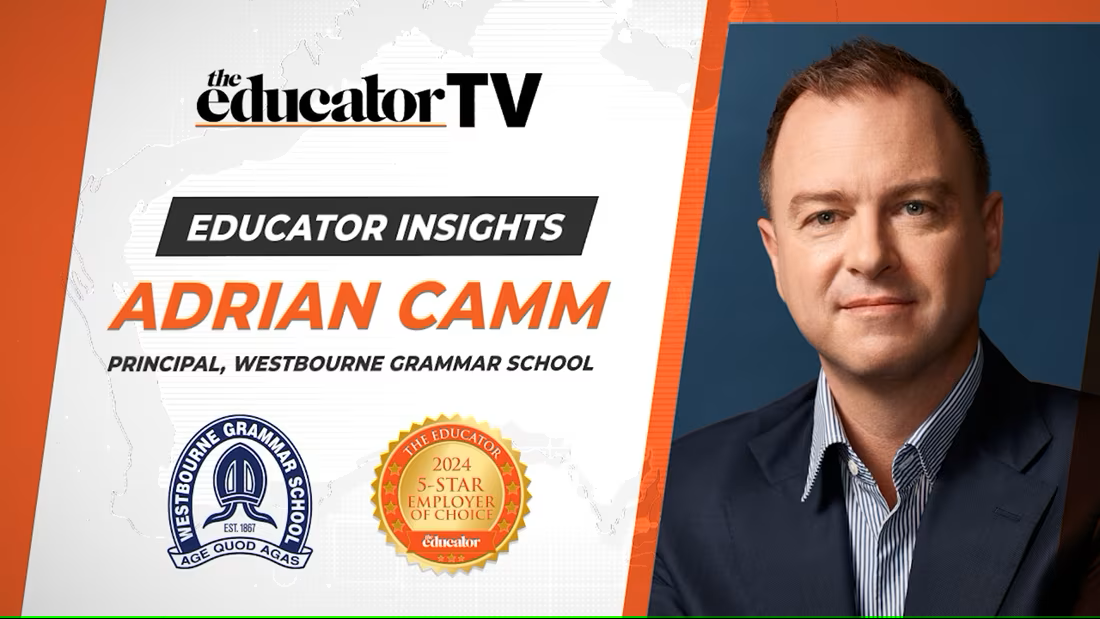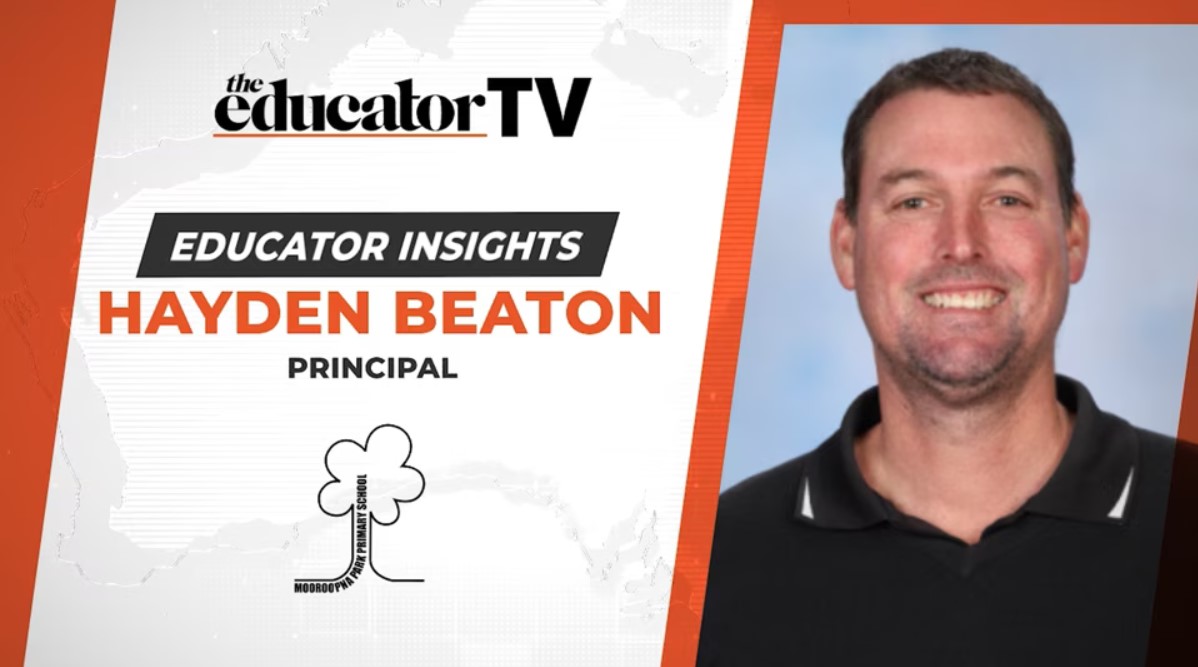A curriculum for the future
To view full transcript, please click here
Kylie: [00:00:13] Hello and welcome to The Educator TV. I'm Kylie Speer, and today I'm talking with Shane Altmann, principal at Faith Lutheran College in Redlands. Faith Lutheran College has recently won the innovation and curriculum design category at this year's annual Australian Education Awards 2022. Congratulations to you, Shane, and thank you so much for joining us today.
Shane: [00:00:37] Thank you, Kylie. It's great to be here.
Kylie: [00:00:39] Well, firstly, winning the Innovation in Learning Curriculum Design Award is no mean feat. Can you tell us about the thinking that underpins the college's approach in this important area?
Shane: [00:00:49] Yeah, thanks for the question, Kylie. I suppose there's really two elements to our thinking. As a college we have a very or had a very strong sense that traditional education or certainly a traditional secondary curriculum was probably broken. It's kind of been 20 years since 20 plus years since that famous Ken Robinson speech and address that talked about the industrialization of education many years ago and the siloed nature and approach of education and how it was designed to do a particular thing but no longer does that. And education needs to be done differently. So we we kind of had this growing sense that education works or that traditional model kind of works maybe 25% of your learners. But it really leaves lots of learners in schools really not reaching their capacity or really engaging well with with the curriculum, with their learning. So we thought, well, we want to be the change that we want to see. So instead of waiting for someone else to, to mix it up and do it differently, we thought we have a great opportunity now at our college to, yeah, do something different. When you do a jigsaw puzzle, you don't just look at individual pieces and kind of put them in your pocket and think about them later. You actually empty it out, you turn it all over, you straighten out the edges, you look at the picture on the box and you get a sense of how it connects and where you're going with with the jigsaw puzzle. And then you begin and each piece you look at, you know, the context and the broad sense of that, and it's integrated and connected. Education traditionally gives gives learners little bits of a puzzle and says, hang on to this, because one day it's going to be important. And the learner kind of thinks, okay, sure. And for some of the kids, they get that. They put it in their pocket and they hang on to it. But for lots of other kids, they don't think, well, what is this thing? And they might ditch it or not. So we wanted to reconstruct and build an education or a learning experience for our kids that connected and made sense, that had context, that fostered curiosity, that allowed students to have choice and agency, that if they were able to if they're really good at music, they didn't have to wait to get to year ten to do year ten music. If you know, if they're graded English or maths, they could leap ahead if they needed to hang around for another year in that space, they could hang around for another year in that space. So we wanted to say our thinking was really around that traditional industrialized model doesn't work for all learners. And so we wanted to create something that was integrated, connected, had greater student agency and was interesting and engaging for kids. So we set about reworking our curriculum and building the mind path course or program that our students use.
Kylie: [00:04:01] The jigsaw puzzle is a great analogy. Shane, Thank you. Next question What are the most impressive outcomes you've seen as a result of this approach?
Shane: [00:04:10] I think it's really easy to try to jump straight to academic outcomes, and certainly we've had academic improvement. But for us, probably the greatest or the first significant outcome we saw was student engagement. Our our. Learners have told us that they love coming to school, that they love their courses and they love connecting with. And you can see it when you walk around the school and when you jump into the classrooms where the kids are there on task, they're working. Attendance at schools been another great outcome. We didn't have bad attendance. We have pretty good attendance at our school. But we've got, we have the situation now where where students say oh mom, I can't miss school tomorrow because I've got Hollywood reel, which is one of our courses that we run. And I can't, we can't go camping on Friday mom because I'm, you know, I'm doing Hollywood Reel or one of her other courses they just want to be here And so attendance is up, engagement is up. Probably one of the other great outcomes is the product as we have, you know, like lots of schools are doing now, we're having celebrations of learning, community forums where kids show off their learning or connect connect with our broader community. So families coming in community. Another one is that family community connection. So moms and dads being in and around the school, but also our learners connecting with community. So local businesses going into businesses and working and learning in business, but also having businesses come in on these kind of event days and evenings. So we're seeing that that connection between family business service groups that we're now creating authentic experiences for our kids. The physical environment is changing in our school. Yes, we're reworking a 20 plus year old campus to be more agile and flexible and contemporary like what many schools are. But we're seeing changes in our physical environment. For example, we did I think it was about one of our courses was around well being and the students were to do a project around well being and some of them held well being, afternoons and events and different things. One of the groups of kids actually did a community art project where they researched the effect that color has on mood and they took one of the walls in the school, a big brick wall in an empty laneway and filled up lots of water bombs and water balloons with different colors of paint. And then they got they did some workshopping with other students in the school, the whole student body, and they workshopped and did things on assemblies and explained what was going on. And they put the word flourish in letters about a metre and a half tall. Along this big wall, they taped up the word flourish because they'd been looking at the work of Martin Seligman, for example, in well being, and that's the name of his famous book.
Shane: [00:07:32] It's part of their course. Put the word flourish on the wall, talked to the kids about the relationship between colour and mood and feelings, and then the students of the school were able to take. A water bond with a particular coloured paint in it and throw it at the wall so they whitewash this wall had the word flourish taped off. And so we've got this big spectacular wall in our school that has this beautiful piece of community art. After all, the kids have thrown the colour all over the wall. They peeled the tape off the word flourish. And so we've got this beautiful negative space image in our school that that is a whole student led college community artwork that really just takes this dag yellow brick wall in an alleyway and makes it kind of cool, like street art. But every kid that walks past that knows about well being, knows about how you can flourish and has those connections to things like rock art and looking out for and looking after each other. So the students are changing the environment, but you know, it's one of the outcomes is there's, there's little places, there's community gardens, there's sitting community gardens, the Sydney community gardens, where you can come and get plants. What's it called? I forget the name of it anyway, the kids, the kids are researching, learning and creating these spaces. So the physical environment is changing by students. For students, that's a fantastic outcome. It's not the college kind of talking to kids and saying, We're going to impose this thing on you, but rather the kids researching and learning and asking to have a response to their learning that changes the way our other students are at school. So it's fantastic. Our standardized tests. Results are going up across this period of change and introduction of this, of this. Program. You know, we've been implementing it over a number of years and it's fully implemented now. You know, and our plan results are up and our results are up. So we're getting that. We're seeing that flow through of engagement and connection to school and community. Sure. Having academic benefits in that traditional sense of of an academic achievement. But but I think really it's the other elements for us, they're the outcomes that we're noticing. It's the school looks and feels different. Kids want to be here. And and another outcome, our enrollments are up. We've grown something like 30% in the last two and a half years. We've got a waiting list to get in. So right across the board, this this change has been quite significant for both our college, but also for the experience of learners in our college.
Kylie: [00:10:35] Well, finally, Shane, looking ahead, how will you be building on this flourishing success to ensure the college remains a force for innovation in education?
Shane: [00:10:45] We we like to think of ourselves as disruptors, but we're probably not as disruptive as we think, right? But we do we do have a very strong sense that we want to we're kind of early adopters if we know if we're the kind of people that get in line at the Apple Store. So if there's a new thing happening and we want to jump into that space quickly and early and have the flexibility in our organization to be able to say, well, why not you know? Let's be that change, Let's do it. We've got a few kind of innovative things on the horizon. One of them is we are now, now that we've got these new courses and this new integrated way out that our kids can study and that's that they're not age restricted. Okay. A year eight student can jump into a year ten course. They don't have to wait until I get to year ten. I think I may have said that earlier. So we've got this different way that kids are moving through the Australian curriculum and the elements of the curriculum. And so now the question for us is, well, how do we report on that and what does our school report look like? So we are in the middle of a conversation and reworking our school reporting to be less text based, if you like, and more graphical and to be more leaning towards a learner profile so that you kind of have these webs. And I know a couple of schools are doing this kind of thing and it's a space that we like and we're going to try to get in there. So, you know, reworking our student reporting to be more graphical, more in a kind of a web, a web style scenario that will have both academic outcomes, but also student profile outcomes on it. So kids capacity and how are they as collaborators, their curiosity and those kinds of things will be reported graphically. And so we're really looking at how we can make that that connection between these programs and how that data feeds into create those different kind of school reports. We are meeting with some people from New Zealand next week. I think we saw I saw a school recently in New Zealand that has a great tool that students can use for for to help staff reflect on their learning. It's a tool that registers both engagement and challenge for a particular course and it plots them on a matrix. And it's a very simple tool that students can use a slide tool on their phone or their iPad that will plot a point on a matrix. Is the work I'm doing right now, engaging and challenging, and the teachers get live data on that and can look at it and think, I need to just stop what's happening here and do something different because the kids, it's too easy or it's too boring or whatever. But also then to be able to use that that feedback and reflection tool for these new courses so we can use it live in a lesson or we can get kids to be able to feed back through that simple online tool to give us better access to the student voice in there. And then our capacity to rework and change what we're doing in a much more agile way. So that's a kind of an innovative thing that we've got going on. We're looking at implementing a parent curriculum. We will all schools have lots of parent information nights and the things we get our preppy new preppy families in to talk about and the kind of challenges that middle primary and upper primary families have as their transition to secondary and the kinds of pathways and journeys that we take our families on as they move through school for 13 plus years with multiple children, we're really looking at what is a if we have instead of being ad hoc about that, if we had to map that almost as a parent curriculum, what how would we do that? So we're looking at creating a parent curriculum as such for our community to help our. Our families in that community understand and see themselves as part of learning and. And always and constantly reworking our academic pathways and programs and wondering if there's some way we can be a little bit more innovative and give student voice a little bit more agency in our pastoral programs as well. So that's sounds like an exhaustive list and there's a lot to do there. But they're really trying to be on the front end of lots of new innovative things. I suppose, given that our community, our school community and the community more broadly are very much supporting and working well with this change that we've had, it's been popular. Families love it. People are coming to the school. So it's kind of and I think this award really gives us a little bit more leverage to say this is this thing's real and it's working. So that gives us license, if you like, to jump into some of these new and innovative things in school, too. So, yeah, we're we're excited for what's next here at Faith Lutheran College.
Kylie: [00:16:09] Well, it certainly sounds like it is working. Indeed. Shane, thank you so much for your time today and congratulations once again. It was lovely speaking with you.
Shane: [00:16:18] Thank you so much. It's been wonderful.
Kylie: [00:16:20] And thank you, of course, to our viewers for watching the latest episode of The Educator TV. We look forward to seeing you again soon.



